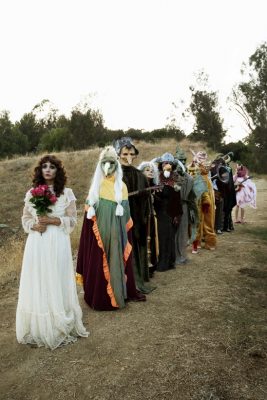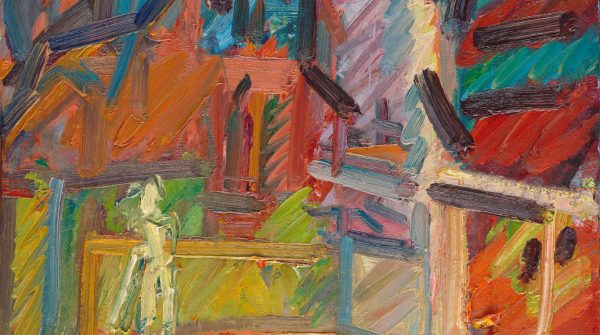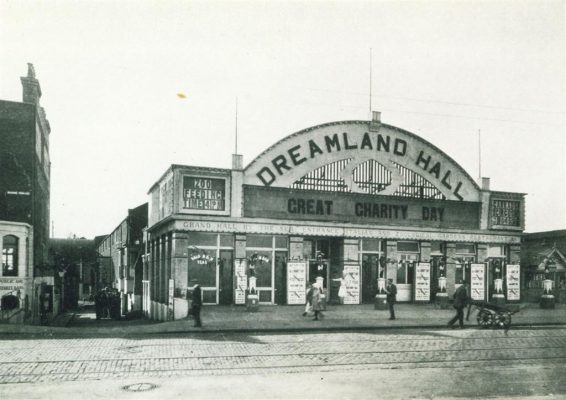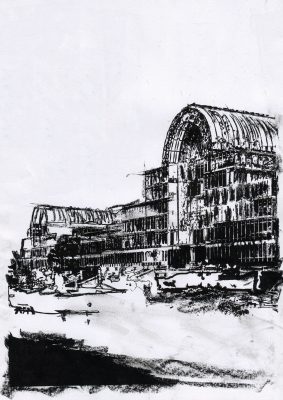Los Angeles-based artist Marnie Weber has spent her career weaving music, performance, collage, photography and performance together into her own personal fictions.
Always heavily involved with the American alt-rock scene, Weber performed with The Party Boys and The Perfect Me in the 1980s before producing two solo albums, Woman with Bass in 1994 and Cry for Happy in 1996. She also designed the cover for Sonic’s Youth’s album, A Thousand Leaves. Her background is evidenced by her determination to incite a reaction from her audience.
More recently she established conceptual art rock group the Spirit Girls, which brings together ‘a group of girls who died tragically in their youth and then come back to earth as spirits to perform in a band and to communicate through music’. This neo-gothic fairytale gave birth to several psychologically-charged artworks which disorientate the viewer. Emotional responses waver between happiness and sadness, amusement and tragedy, attraction and repulsion.
Mixing mainstream with counter-cultural elements, but also inspired by classic westerns and Surrealism, Marnie Weber’s mythological world is populated with fantastic beasts and masked characters. Among the recurring figures are the clown, the doll and the bear. She describes them as friends or demons that follow her around. Her unique Surrealist lens is most trenchant in her videos, which she sees as ‘moving dreamscapes’.




